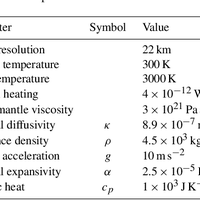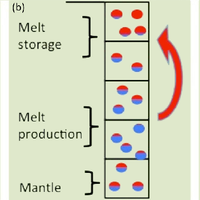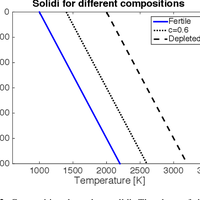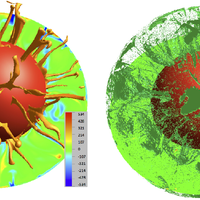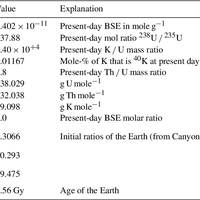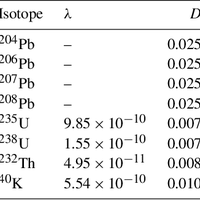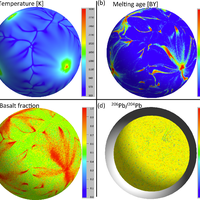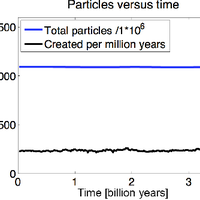Abstract
Many outstanding problems in solid-Earth science relate to the geodynamical explanation of geochemical observations. Currently, extensive geochemical databases of surface observations exist, but satisfying explanations of underlying mantle processes are lacking. One way to address these problems is through numerical modelling of mantle convection while tracking chemical information throughout the convective mantle. We have implemented a new way to track both bulk compositions and concentrations of trace elements in a finite-element mantle convection code. Our approach is to track bulk compositions and trace element abundances via particles. One value on each particle represents bulk composition and can be interpreted as the basalt component. In our model, chemical fractionation of bulk composition and trace elements happens at self-consistent, evolving melting zones. Melting is defined via a composition-dependent solidus, such that the amount of melt generated depends on pressure, temperature and bulk composition of each particle. A novel aspect is that we do not move particles that undergo melting; instead we transfer the chemical information carried by the particle to other particles. Molten material is instantaneously transported to the surface layer, thereby increasing the basalt component carried by the particles close to the surface and decreasing the basalt component in the residue. The model is set to explore a number of radiogenic isotopic systems, but as an example here the trace elements we choose to follow are the Pb isotopes and their radioactive parents. For these calculations we will show (1) the evolution of the distribution of bulk compositions over time, showing the buildup of oceanic crust (via melting-induced chemical separation in bulk composition), i.e. a basalt-rich layer at the surface, and the transportation of these chemical heterogeneities through the deep mantle; (2) the amount of melt generated over time; (3) the evolution of the concentrations and abundances of different isotopes of the trace elements (U, Th, K and Pb) throughout the mantle; and (4) a comparison to a semi-analytical theory relating observed arrays of correlated Pb isotope compositions to melting age distributions (Rudge, 2006).
Figures
Register to see more suggestions
Mendeley helps you to discover research relevant for your work.
Cite
CITATION STYLE
Van Heck, H. J., Huw Davies, J., Elliott, T., & Porcelli, D. (2016). Global-scale modelling of melting and isotopic evolution of Earth’s mantle: Melting modules for TERRA. Geoscientific Model Development, 9(4), 1399–1411. https://doi.org/10.5194/gmd-9-1399-2016

